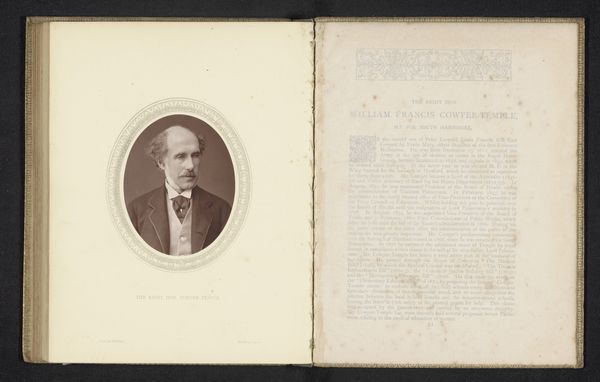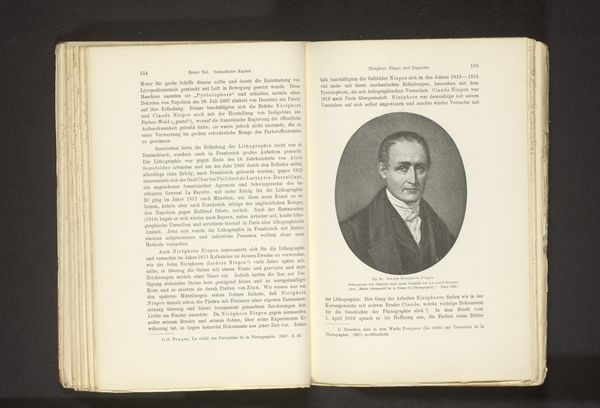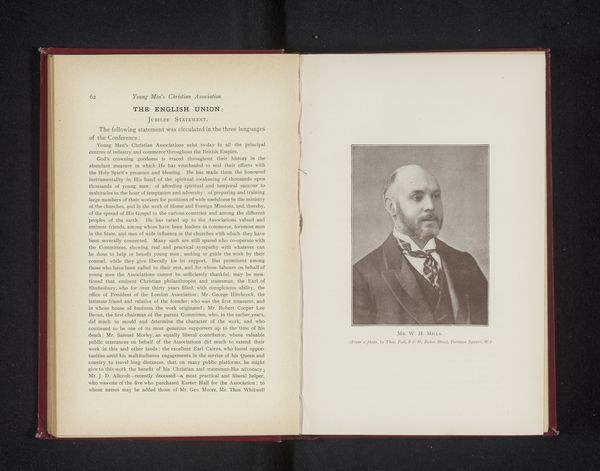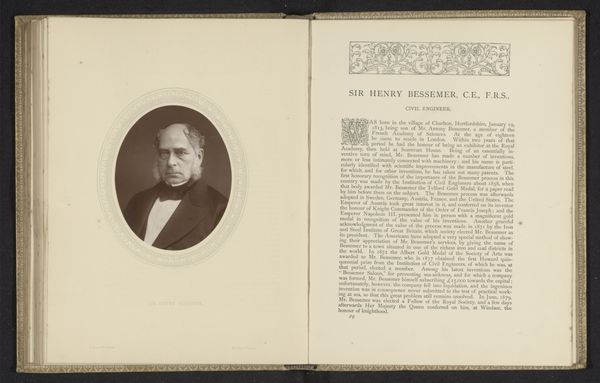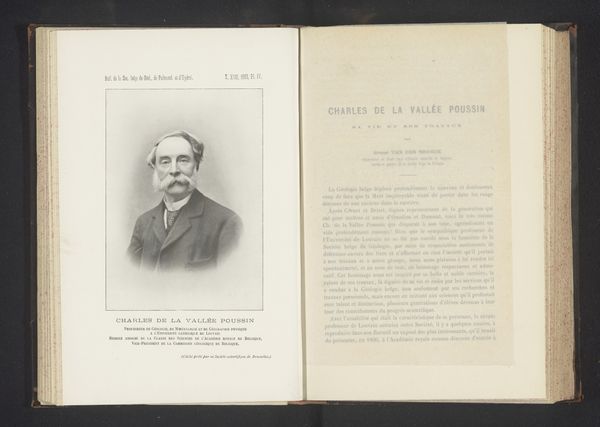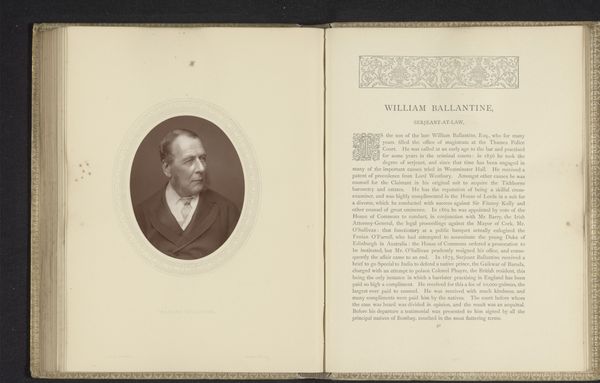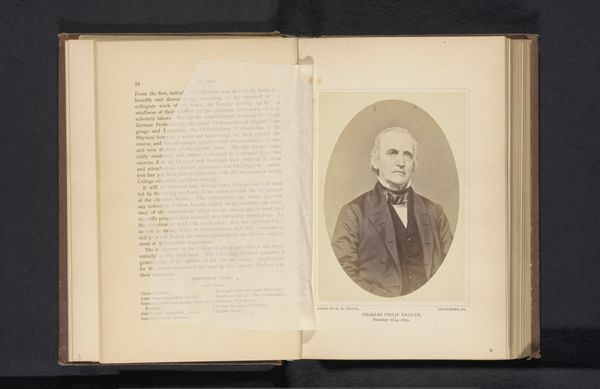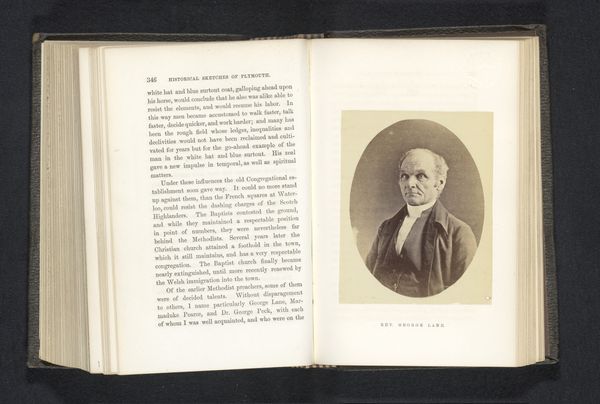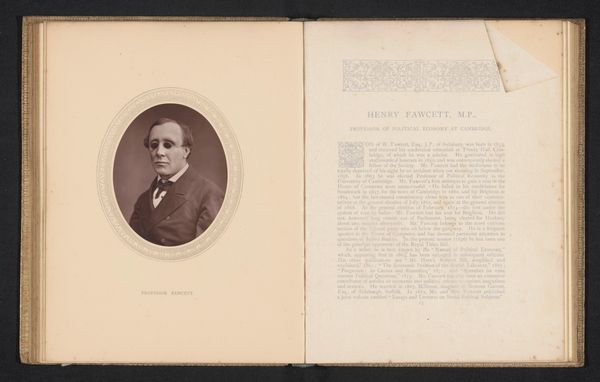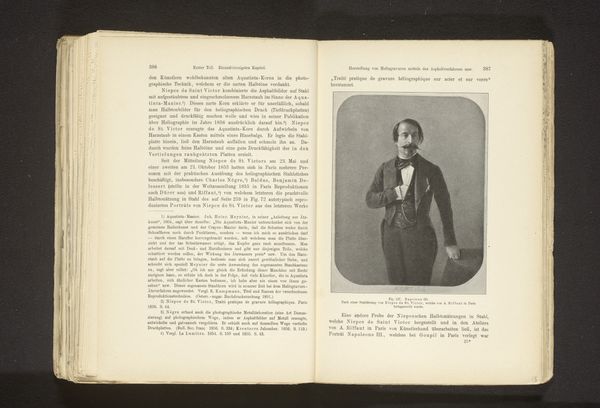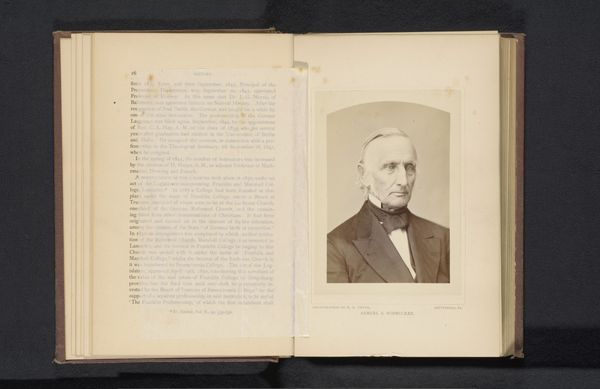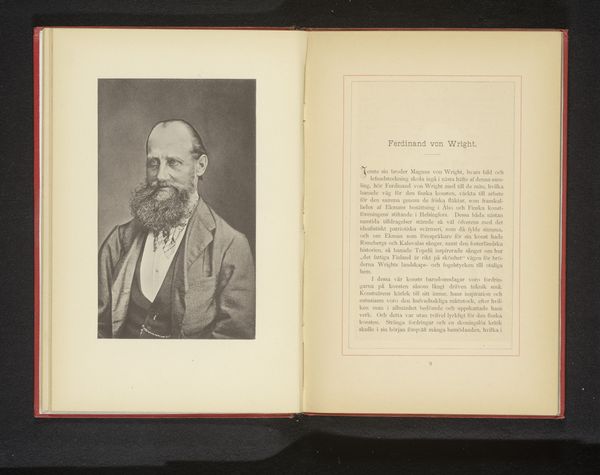
photography, gelatin-silver-print
#
portrait
#
aged paper
#
toned paper
#
homemade paper
#
paper texture
#
photography
#
personal sketchbook
#
journal
#
fading type
#
gelatin-silver-print
#
thick font
#
genre-painting
#
golden font
#
historical font
Dimensions: height 110 mm, width 72 mm
Copyright: Rijks Museum: Open Domain
Editor: So, this is "Portret van Charles Briggs Thomas," a gelatin-silver print taken before 1871 by Edric L. Eaton. It looks like it's adhered to the inside cover of a book of some sort, sitting right next to what looks like a descriptive text page. There's a very serene quality to this portrait – how do you interpret this work? Curator: I'm intrigued by the juxtaposition of the stern portrait alongside what appears to be a detailed description. Look at the stylistic elements present in each frame; they convey particular narratives, both for this man, as well as a cultural narrative for that time period. The image and the text mirror and reinforce each other, crafting a persona and speaking to contemporary values. Editor: That makes sense, a crafted image is like a mirror, showing people what society wants them to see. But what do you make of the photograph itself? Curator: Consider the formal pose, the controlled lighting… these contribute to a visual language intended to convey respectability and intellect. Every deliberate choice reinforces Thomas's social position and authority. The details - the tie, the hair – aren't random. How might his affiliation with the "Omaha Daily Tribune," also presented in the text, deepen that understanding? Editor: I see what you mean! It’s not just a picture, but a carefully constructed message, from his stern look to his perfectly situated presence alongside his name and publication. Curator: Exactly! It presents layers that reward deeper investigation; the individual portrait transcends simple representation. We are asked to consider it both within its own time and how it reflects enduring cultural preoccupations with character, status, and memory. Editor: Thanks! It's amazing how much richer even a seemingly simple portrait becomes when you start thinking about its layers of symbolism. Curator: Indeed, the resonance of images evolves, shaped by the interplay of time and evolving cultural perceptions.
Comments
No comments
Be the first to comment and join the conversation on the ultimate creative platform.

